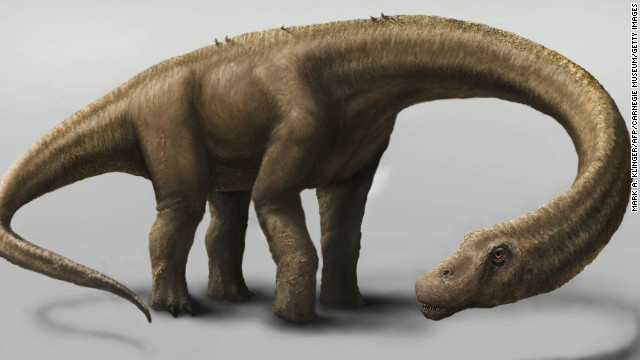Filtered By: Scitech
SciTech
Meet Dreadnoughtus, the biggest dinosaur ever discovered

Scientists have unearthed a prehistoric secret in Argentina that can definitely be described as “colossal,” both in the literal and figurative sense – a long-necked, long-tailed dinosaur that could very well have been the largest creature to ever walk the planet.
Named Dreadnoughtus schrani in honor of tech entrepreneur and study benefactor Adam Schran, this newly identified titanosaurian sauropod left an undeniably gigantic mark on the world during the Cretaceous period, 77 million years ago.
“We decided on Dreadnoughtus - meaning 'fearer of nothing' - because when you're as big as this thing was, you're probably not afraid of too much," said Matt Lamanna, assistant curator of vertebrate paleontology at Pittsburgh’s Carnegie Museum of Natural History and part of the research team. The dinosaur’s genus name was inspired by the powerful dreadnought battleships of the early 20th century.
Estimated to have weighed up to a maximum of 90 tons (82,107 kg) upon reaching adulthood, the herbivorous behemoth most likely lived up to its moniker; after all, it was about 7 times heavier than the infamous Tyrannosaurus rex.
Big dinosaur, big surprises
“To put this in perspective, an African elephant is about five tons, T. rex is eight tons, Diplodocus is 18 tons, and a Boeing 737 is around 50 tons,” explained Kenneth Lacovara, a Drexel University paleontologist and author of the study.
“And then you have Dreadnoughtus at 65 tons.”
Found in southwest Patagonia in 2005, the nearly complete and rather well-preserved remains of Dreadnoughtus revealed remarkable measurements. The 65-ton (59,300-kg) specimen was 85 feet long (26 meters), with a neck and tail that were 37 feet (11.3 meters) and 30 feet (8.7 meters) in length, respectively.
The team found two Dreadnoughtus specimens side by side, one specimen larger than the other. Astoundingly, the researchers believe that the larger Dreadnoughtus specimen was, in fact, not even fully grown yet.
"Shockingly, at the time of death, the 59-ton Dreadnoughtus was still growing fast," said Lacovara.
Lacovara further added that “the relative completeness of Dreadnoughtus and the exquisite preservation of its bones will help improve our understanding of many questions,” including sauropods’ body metrics and usual growth rate. At the moment, experiments involving virtual models and 3D-printed bones of Dreadnoughtus are being conducted in order to find answers.
'The bigger they are…'
Of course, as conventional wisdom tells us, Dreadnoughtus’s enormous size may not have been an advantage all the time.
As Lacovara explained: “If you look at its really big ribs, there's no way they're going to withstand 65 tons of weight on top of them. It would have been a catastrophic event in the life of a Dreadnoughtus if it fell over.”
Still, this does not mean that Dreadnoughtus was just a plant-eating pushover.
"It's conceivable that a pack of these predators could take down a sick or old Dreadnoughtus, but a single carnivore versus a 'Dread' would be a drubbing,” affirmed Lacovara.
The team’s study about this spectacular new discovery was recently published in the online journal Scientific Reports. — TJD, GMA News
More Videos
Most Popular



